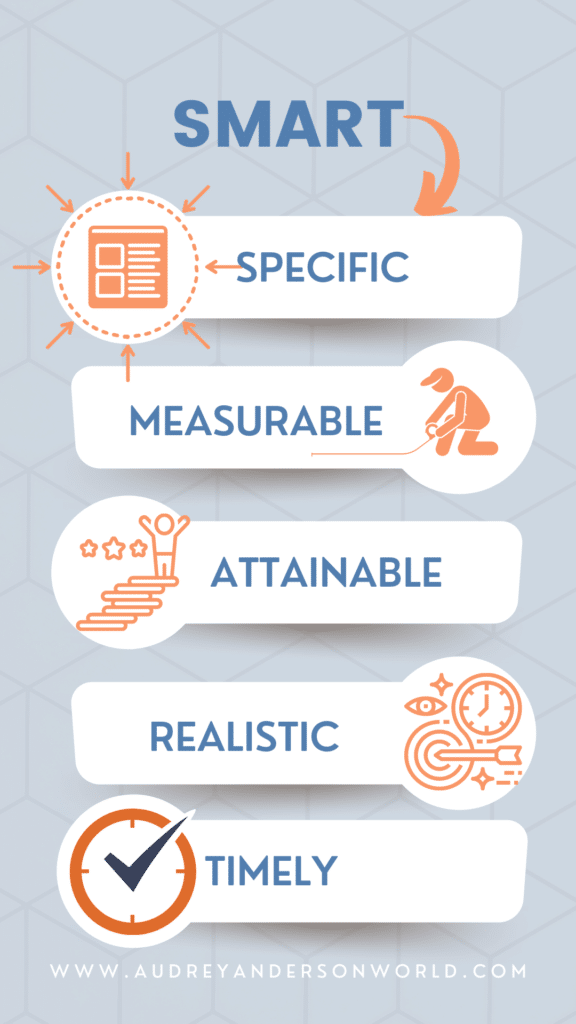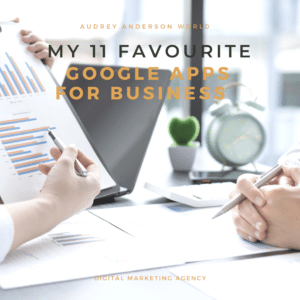
Lash Serums That Work My Favorite – 2023 Review
Lash Serums That Work and are my favourite – A Review We may get paid a commission if you buy something after clicking on one of our affiliate links here

As the CEO of a web design firm that works with top clients across Australia, I wanted to share the word about how SEO and Blog content lends a hand with brand exposure, website traffic, and lead generation.
Your website’s traffic will improve as a result of SEO. Likewise, your visitors will benefit from your content marketing efforts. In what ways may they be effectively combined?
In today’s competitive marketplace, it’s more crucial than ever to stand out from the crowd. As a result, this is where content marketing and SEO come in. SEO Content Strategy may help your website rank higher in search engine results, while content marketing can help you communicate your narrative and establish relationships with clients (SERPs).
Using these two powerful marketing strategies together will help you build a robust online presence. I want to help you get the most out of your content. We’ll discuss using SEO content strategy to get it noticed and develop your brand SEO content strategy.
No business in 2022 can afford to ignore content marketing, and search engine optimisation (SEO) is the digital age we live in.

Assuming that you’ve been creating web pages at random and hoping for the best, it’s time to buckle down and implement a more rigorous SEO content strategy.
There are several ways in which content marketing and SEO are intertwined. When it comes to promoting your content, SEO is a great tool. You can improve your website’s visibility on search engine results pages (SERPs) and, as a result, increase traffic to your site. With the ability to reach a larger audience with your material and increase the visibility of your company or blog as a result.
Link building is the second way that content marketing and SEO are intertwined. Search engine optimisation relies heavily on creating relevant backlinks between your website and other domains. One of your articles could be used to connect with other websites and swap backlinks in exchange for a link to your site. Other bloggers who write about related themes may be willing to exchange some of their own for yours, so it’s a win-win situation.
Finally, you can create customer trust by employing content marketing and SEO. Visitors to your website may be apprehensive about what they see for the first time. They’ll be more interested in your Brand if you provide them with helpful content that addresses their concerns or answers their inquiries.
A poor-quality content could compel people to lose faith in the Brand and affect if they do business with you or buy from you in the future if they find it.
Your SEO content strategy must stay on top of evolving customer behaviour, from targeted keywords to mobile optimisation and search intent to content types.


Amazing View
Content marketing and SEO work hand in hand to make your business more attractive. The best companies understand how to take advantage of these two marketing tactics together to gain the best results for their online presence. As a result, there is much chatter about SEO in the content marketing world, and for a good reason.
Create a Content marketing strategy that helps you tell your story, build relationships with customers and attract new ones. It’s all about writing quality content that resonates with your target audience and gets them interested in what you have to say. Once you capture their interest in content, it’s time to take the following steps—SEO (Search Engine Marketing).
SEO can help you rank higher on SERPs by inputting essential keywords into your website’s metadata tags and internal links. Helping search engines better understand what your Brands website is all about so they know where to rank it when someone searches for those keywords. Plus, it helps create a long-term organic growth strategy for your company down the line.
Ensuring you avoid your Content and SEO Strategy on-page optimisation problems such as keyword stuffing, excessive keyword inclusion, and header tag stuffing.
Before planning your content marketing strategy, you need to know your target market. Sixty-seven per cent of the marketers polled said they planned to increase their market research spending in the coming year.
Saying that your target market is everybody interested in your business is too broad. Trying to target everyone, though, will get you nowhere. Instead, target a small number of people. Niche marketing will help you compete, especially if you are a small business.
Targeting a specific demographic helps you align your branding and marketing budget with a viable market. This will help you reach more potential clients and earn more business.
If you are new to content marketing or want to boost your game, you must first define your speciality. Then, do a little market study.
How?


#1 Exploring Your Existing Customer Base
Before continuing, reassess your knowledge about your clients. First, find out who your customers are. Who are your customers? Knowing the answers to these questions can help you demonstrate to new clients how they can benefit from your product or service.
#2 Assess Your Rivals
Examining your competitors’ target demographics may help you identify your own. First, find out who their competitors are and whom they have missed. Then you win.
#3 Demographics
To execute an effective content marketing campaign, you must understand your audience. This will help you match your product with those most likely to benefit from it and be interested. Consider the following:
Knowing your clients’ average age can make a massive difference in the long term.
After figuring out the fundamental demographics, you need to know your target.
Next, get to know your target audience’s personality. These are known as psychographics in the business.
Here is the psychographics to look at:
These traits might help you plan your content marketing approach.
You’re undoubtedly asking now, where do I find this information?
It’s easier than you think to understand your audience. No need to worry about spying, snooping, or mind-reading. It only takes a few minutes to investigate your target demographic.
Learn from others who have published articles and blog posts targeting comparable audiences. Forums also allow you to hear from other marketers.
Surveys and direct client interaction will also assist you in understanding your audience’s wants (and up your user engagement). Keyword research will also reveal what your niche wants and its questions.
-Set goals before you start your marketing strategy. These will help you track your development.
Whether you want to create leads, nurture leads, or increase user engagement, targets let you track your progress. Having clear goals helps keep you motivated and ensure that every action you do is a step towards your intended outcome.
Setting imprecise or unreasonable goals is a waste of time. In most circumstances, aiming for 3 million views in three months is unrealistic. You’re putting yourself in a bad situation before you’ve even attempted. Instead, be specific. Set SMART goals.
SMART goals are;
Specific
Use precise language like ‘increase engagement’ or ‘grow traffic’.
Specify your content marketing goals. Detail your goals. If your goal is to increase traffic, be explicit. Set daily visitor, like, and share goals per article. Make a clear picture of achieving your goal.
What does it mean to ‘increase engagement’, for example? This goal may result in an active comments section or rapid responses to consumer queries, comments, and complaints.
Measurable
Clarifying and measuring your content marketing goals will help you focus. Setting clear goals from the start will help you achieve your goals.
Evaluation of marketing campaigns can be complex. Especially when measuring it.
Attainable
Begin by assessing your resources for content marketing success.
Attainable objectives are goals that you can reach with your current resources.
If you don’t have the abilities, you can hire an expert or buy new software to help you (like an SEO writer or automated social media posting, for example).
If your goals are still unattainable, review or reduce them temporarily.
Realistic
Realistic aspirations acknowledge limitations. Ask yourself what constraints you face and be honest. Aim high yet be practical. Know the difference between the two.
Evaluation of the current business situation might assist define realistic goals. Know your current traffic, conversion, lead, etc. numbers inside and out.
Timely
Goals and deadlines are best friends. Make a schedule and stick to it. Procrastination is avoided, and accountability is increased.
Every objective you establish should be measured against these traits. If it doesn’t tick all the boxes, reconsider. Your content marketing approach will be significantly more powerful and productive if you set SMART targets.


3. Value Proposition Clarified
Content marketing is a tough market. Nowadays, with so much business done online, it’s hard to distinguish out.
Maximise your chances by explicitly identifying what you offer that others do not. This involves highlighting what sets you apart from the competition.
You may be wondering how to prove your worth to your clients. First, you need a clear value proposition to illustrate the benefits successfully.
A clear value proposition outlines how your product solves problems or improves situations and tells the ideal consumer why they should buy from you instead of your competitors.
No target means no bullseye. It’s tough to achieve marketing goals without a defined value proposition.
Building a solid brand identity is essential for content marketing. Even a small business should strive for digital originality with a defined marketing message. Online branding includes images, taglines, logos, web design, and a distinct voice.
After creating your Brand’s image, you must place yourself in a more extensive field. It means joining your specific community. For successful audience integration, you must first conduct market research.
How do they use social media? Then it would be best if you were active on Twitter. Twitter is an excellent platform for your content marketing program to promote your Brand.
If people use Instagram the most, you should focus on visual branding. Engage your target audience on Reddit. Observe how your target audience interacts and emulate them.
Storytelling is essential in building a brand. So you defined your values. Sharing your Brand’s origin story will assist develop a stronger identity. Online firms can use storytelling to personalise their branding. The lack of this in internet enterprises will put you miles ahead of the pack. The use of stories also improves transparency.
Compelling storytelling requires consistent branding across all mediums.


Amazing View
5. Success Metrics
Metrics are indicators of success and failure. A chore, metric tracking demonstrates what works and what needs to change.
However, many marketers make the error of measuring indicators that don’t accurately reflect their website’s performance. Your metrics must support your objectives. For example, a news site might count visitors to determine ad revenue. Not all businesses will benefit from this metric.
The key is to choose indicators that can genuinely track your performance, not just those that appear excellent on paper.
SEO can help your content marketing efforts in a variety of ways.
First, SEO can help drive traffic to your website. The higher your Brand ranks on SERPs; the more people see your content. With this increased visibility comes more opportunities to engage with potential customers and convert them into leads or sales.
Second, by following best practices for SEO, you’ll be able to increase the relevance of your content. For example, search engines like Google and Bing use algorithms to understand better what’s relevant for their users and show those results first.
By including keywords in your content relevant to your audience, you ensure that you’re giving search engines what they want and increasing the likelihood that you rank higher on SERPs than competitors who don’t include relevant keywords in their content.
Third, by appropriately using targeted keywords in blog articles, social media posts, and other online resources, potential clients will be able to find what they need more quickly in the future when they conduct further searches. In addition, it tells potential buyers that if they need a product or service like yours, they should get in touch with you.
There are numerous advantages to incorporating SEO into your content marketing plan!
Search engine optimisation (SEO) – The Best keyword research tools Keyword research, link building, site audits, page optimisation, rank tracking, reporting, and more are all part of the fundamental SEO toolkit.
Content Marketing Tools Available
Identifying New Keywords.
Using the Keyword Planner, you can get ideas for relevant keywords while you’re looking for keywords to employ in your campaign. If you have no idea where to begin when it comes to identifying keywords for your sites, this is a terrific resource.
To create your content marketing strategy, start by deciding whether to focus on broad or niche topics. Broad content focuses on “digital marketing” topics, while niche content is more specific to things like “digital marketing for healthcare providers.” To promote these pieces of content, use SEO techniques to optimise your website and social media channels.
The keyword research phase will provide valuable insight into what keywords will bring traffic and make it easier for search engine bots to crawl your site. The blog post should include keywords relevant to the industry and help your content rank better.
For example, if you’re writing about digital marketing for healthcare providers, make sure to include words like “marketing strategy” and “marketing plan” in the article title or throughout the body of the article. You can also have keywords in image captions and meta descriptions if they apply.
To get people talking about your content, share it with relevant communities on LinkedIn groups or Facebook groups related to the topic you wrote about. You can also share it on Twitter with relevant hashtags (#). By focusing on these two tactics—content marketing and SEO—you will have a more substantial presence online, leading to more traffic and higher conversions.
If you want to get more customers or strengthen your Brand, SEO and content marketing are two powerful tools that go hand-in-hand. Together, they can help you get more visibility online and ultimately bring in more revenue. Content marketing not only builds trust and relationships with your audience but also aids in search engine optimisation (SEO)
But how do you get started? The key is to focus on the intersection of SEO and content marketing. This can mean creating content that promotes your SEO efforts or using SEO to promote your content.
A key takeaway for your Brand is to make sure you’re using both strategies in tandem, and only then will you be able to tap into their full potential.
Get updated with the latest news about our company’s achievements and activities

Lash Serums That Work and are my favourite – A Review We may get paid a commission if you buy something after clicking on one of our affiliate links here

Rodan and Fields Consultant + Rodan and Fields Find a Consultant Should I join the Rodan Fields Consultant Program? EVERYTHING YOU NEED TO KNOW ABOUT BECOMING A CONSULTANT FOR RODAN

The best sunscreens The Best Sunscreens – so you can be sure you’re getting the best protection possible. AAW Your ultimate guide to the Best sunscreens CHICHI KAWA – Summer

My best hair care products We may get paid a commission if you buy something after clicking on one of our affiliate links here on the site on the best

Retinaldehyde The Ultimate Guide to Retinaldehyde – the Older Sister of Retinol: The type of retinoid you use matters if you are looking for a retinoid to treat acne, premature

My 11 Favorite Google Apps For Business If you haven’t already, I invite you to check out the G Suite platform for your business and my Favourite Google Apps For
